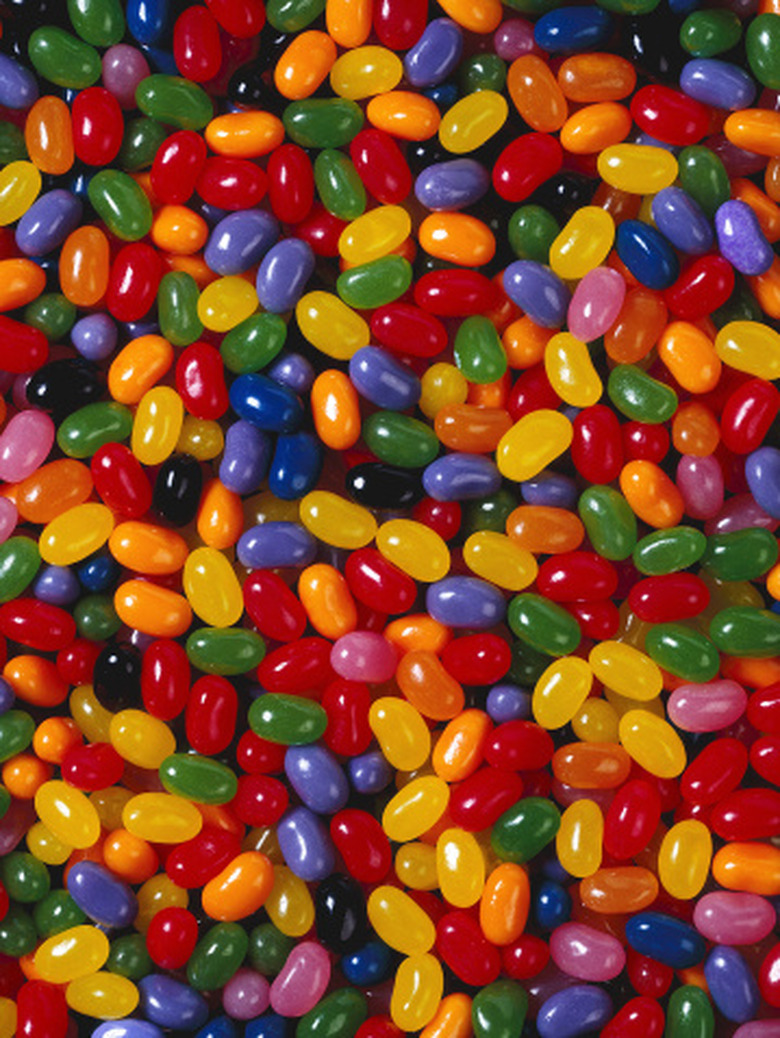Jelly Bean Science Experiments
Science experiments often call for combining different items and finding what will happen. They also ask for research and a write-up or chart of your findings. Science experiments that use jelly beans as one of their main ingredients are as tasty as they are educational. Whether testing taste, modeling how things work and look or breaking down ingredients, jelly beans make science fun and informative.
Senses
Senses
Using a variety of jelly bean flavors, blindfold participants and have them plug their noses. Provide them with the different jelly beans and have them guess each of the flavors. Once they have tried all of the flavors, have them try each again without the blindfolds or plugging their noses. Determine if the senses of smell and sight have an effect on the ability to taste flavors.
Natural Selection Model
Natural Selection Model
For this project you need enough jelly beans for each participant to have 10, a cup or other container for each participant to hold his jelly beans in and an empty ice cream tub. Following the project outlined by the Fizzics Education website, separate all the black jelly beans from the rest and calculate the percentage of black beans; divide the number of black jelly beans by the total number of jelly beans, then multiply the result by 100. Mix all jelly beans back together and hand five out to each participant. Have each participant select and eat two favorite flavors and then return the other three to the tub. Repeat this three times and then re-calculate the percentage of the black jelly beans. Chart your results for before and after on a jelly bean graph.
How Earth Sustains Life
How Earth Sustains Life
Earth's unique combination of carbon dioxide and methane in the atmosphere keeps the planet warm enough to sustain life. Mars and Venus, Earth's neighbors on either side, are too hot (Venus) and too cold (Mars) to sustain life. The vast differences in temperatures and the resulting ability or inability to maintain life is referred to as the Goldilocks Principle. Use various colored jellybeans laid flat in clear plastic bags to demonstrate the levels of all the major gasses on the three planets. Assign a different color for each gas and determine what percentage of the atmosphere each jelly bean represents. Chart your findings.
Ingredients in Different Quantities
Ingredients in Different Quantities
Show each of the ingredients that go into making a jelly bean and the quantities of each that are used. Arrange each ingredient on a separate dish. Explain how the same ingredients used in different quantities results in entirely different foods. Display each of the ingredients in its regular state and show how the different textures and states come together to create the texture of the jelly bean.
Cite This Article
MLA
Salloway, Lindsey. "Jelly Bean Science Experiments" sciencing.com, https://www.sciencing.com/jelly-bean-science-experiments-8637375/. 24 April 2017.
APA
Salloway, Lindsey. (2017, April 24). Jelly Bean Science Experiments. sciencing.com. Retrieved from https://www.sciencing.com/jelly-bean-science-experiments-8637375/
Chicago
Salloway, Lindsey. Jelly Bean Science Experiments last modified August 30, 2022. https://www.sciencing.com/jelly-bean-science-experiments-8637375/
